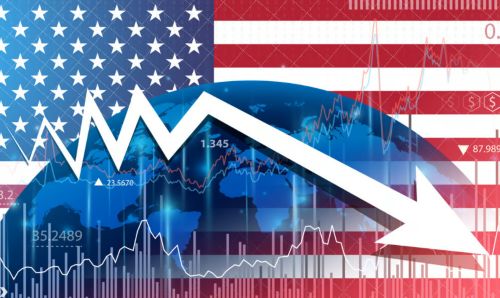

Whether this moment becomes a full recession depends on workers and households. If layoffs remain rare, the system may muddle along in a weakened state. If not, the cliff edge may give way.

By Matthew A. McIntosh
Public Historian
Brewminate
A Labor Market at a Standstill
For much of the post-pandemic recovery, the American labor market seemed unshakable. Strong job creation reassured households and policymakers that the economy could withstand high interest rates and global uncertainty. That story is now shifting.
In August, the U.S. added only 22,000 jobs, a figure so weak that some economists are calling it the first clear sign of contraction. Mark Zandi, chief economist at Moody’s Analytics, warned that what many assumed was a “cooling” economy may already be a “jobs recession.” His concern reflects the unease of a system that has lost its last reliable buffer.
“On the Edge of a Cliff”
Zandi has described the economy in startling terms. Speaking to Business Insider, he said, “Everything is clinging tightly to the lip of the cliff. We now [have] seven fingers. A couple more…and we’re going over the edge.”
The metaphor is dramatic, but it matters precisely because Zandi is not known for exaggeration. He has built his reputation on measured assessments. For him to reach for such language signals that the danger is real.
And yet, there’s still a note of ambiguity. The cliff image suggests both inevitability and suspense: everyone knows the fall may come, but no one can say when. That tension defines the current moment.
The Risk of Slippage into Broader Recession
The line between slowdown and recession often rests on employment. Zandi has pointed out that data from June and July may yet be revised into outright job losses. “If businesses start laying [people] off, then…it will not just be a jobs recession, [but an] overall economic downturn,” he told Inc.
That possibility reframes the story. A flat month is not harmless if it’s later revealed as negative. Revisions matter because they rewrite the past, turning what looked like stability into evidence of decline. Policymakers and markets may realize too late that the recession did not just arrive; it had already begun months earlier.
Sectoral Weakness and State-Level Risk
Not every corner of the economy is equally exposed. Construction has slowed under the weight of high interest rates. Manufacturing faces global headwinds. In some regions, conditions already look recessionary, while in others growth continues at a modest pace.
But unevenness can be deceptive. Zandi highlights a deeper imbalance: the top 10 percent of earners now account for half of all consumer spending. When prosperity is carried by so few, the foundation beneath everyone else weakens.
This is what economists call a K-shaped economy, one group climbing upward, another slipping down. The question is how long the narrow shoulders of the wealthy can keep the broader system aloft.
Voices of Hope Amid the Warning
Zandi has not abandoned nuance. He acknowledges resilience in sectors like technology, where immigration and innovation still drive demand. This, he suggests, offers some insulation against broader contraction.
Such resilience, however, is uneven. Health care, clean energy, and exports may hold steady, while retail, construction, and state budgets falter. That pattern does not cancel out a downturn; it only redistributes the pain.
What’s Next: Benchmarks to Watch
The most immediate signposts are revisions to recent job data. If earlier gains are rewritten as losses, the case for recession strengthens. Zandi has underscored this risk, warning that the apparent flatline may already conceal decline.
Markets are also watching the Federal Reserve. Rate cuts are expected, but Zandi argues much of their effect is already priced in. Lower borrowing costs may provide relief, but they cannot resolve structural imbalances in spending or investment.
The Fed’s challenge is not purely technical. It must persuade households and businesses that stability is possible without promising more than policy can deliver. Confidence, as much as credit, is now in short supply.
Conclusion: Between “Cooling” and “Contracting”
The U.S. economy sits in a gray zone. Job growth has slowed to a crawl, and respected economists like Mark Zandi warn a “jobs recession” may already be under way. Imbalances in consumer spending, sectoral weakness, and the looming risk of data revisions deepen the uncertainty.
Whether this moment becomes a full recession depends on workers and households. If layoffs remain rare, the system may muddle along in a weakened state. If not, the cliff edge that Zandi describes may give way. Either way, the era of unshakable job growth is over. What comes next is less a question of if than of how deep the fall will be.
Originally published by Brewminate, 09.08.2025, under the terms of a Creative Commons Attribution-NonCommercial-NoDerivatives 4.0 International license.


